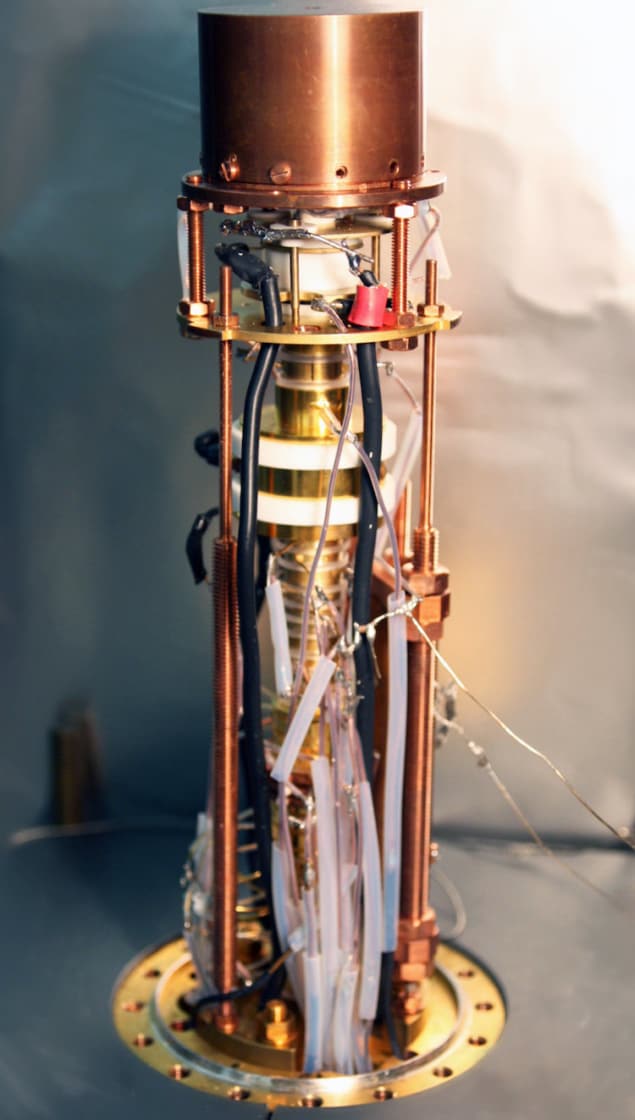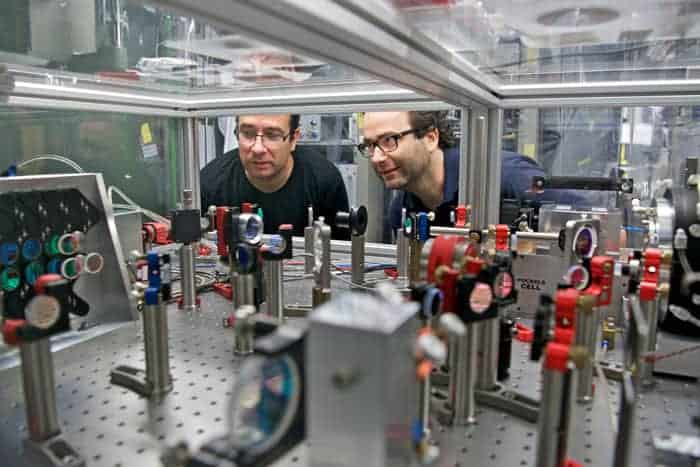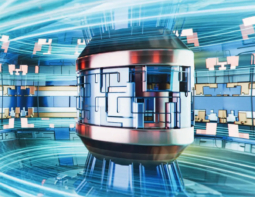
© MPIK
Physicists in Germany say they have made the world’s most precise measurement of the deuteron mass by comparing it to the mass of the carbon-12 nucleus. The new work, which was carried out by confining deuterons (which are nuclei of deuterium, or “heavy” hydrogen) and carbon-12 nuclei with strong magnetic and electric fields, provides a crucial independent cross-check with previous measurements that yielded inconsistent values.
Knowing the precise masses of simple atomic nuclei such as hydrogen, its isotopes deuterium and tritium, and the molecular hydrogen ions H2+ and HD+ (a proton and a deuteron, bound by an electron) is crucial for testing fundamental physics theories such as quantum electrodynamics. The mass of the deuteron can also be used to derive the mass of the neutron, which has implications for metrology as well as for atomic, molecular and neutrino physics.
To make these precise measurements, physicists often turn to Penning traps, which use extremely strong magnetic and electric fields to trap charged particles such as single deuterons and other simple ions. Once trapped, the particles oscillate at a particular (cyclotron) frequency that depends on their mass, with heavier particles oscillating more slowly than lighter ones. Hence, if the oscillation frequencies of two different ions are measured in the same trap, one after the other, the ratio of their masses can be calculated to a high precision (around one part in 8.5 x 10-12).
A cryogenic Penning trap mass spectrometer
In the new work, a team from the Max Planck Institute for Nuclear Physics, the Johannes Gutenberg University, the GSI Helmholtz Centre for Heavy Ion Research and the Helmholtz Institute in Mainz used a special cryogenic mass spectrometer that is dedicated to light-ion mass measurements. The setup of this spectrometer, which the researchers dubbed LIONTRAP, consists of a stack of Penning traps. This stack includes a highly optimized seven-electrode precision trap and two adjacent storage traps that sit within the homogeneous magnetic field of a superconducting 3.8 Tesla magnet. The entire set-up is also kept in a near-perfect vacuum (better than 10-17 mbar) at a temperature of about 4K.
The researchers placed a deuteron in the storage trap before transferring it to the precision trap. There, they determined its oscillation frequency with high precision by measuring the tiny alternating currents (known as image currents) induced at the inner surfaces of the trap electrodes by the charge of the moving ion. Finally, they compared this frequency measurement with a similar one made on a carbon-12 ion (12C6+) in the same apparatus.
Adjustable superconducting electromagnetic coil
Study lead author Sascha Rau explains that the team chose 12C6+ because it serves as the mass standard for atoms – meaning that its mass, by definition, is equal to 12 atomic mass units. Hence, measuring the ratio of the deuteron and 12C6+ ion oscillation frequencies gives the mass of the deuteron directly, in atomic mass units.

Proton radius mystery deepens as deuterium measurement comes up short
The precision of previous measurements made using this method was limited by deviations of the trap’s magnetic field from its ideal form. The German team overcame this problem by using an adjustable superconducting electromagnetic coil that is directly wound around the trap chamber, so that the trap can operate without disturbing the magnets in the other coils too much. This set-up allowed them to measure the magnetic field deviations and supress them by a factor of 100. In this way, they determined that the mass of the deuteron is 2.013553212535(17) atomic units, where the number in brackets indicates the statistical uncertainty of the last digits. The mass of the hydrogen molecular ion HD+, determined by the same method, is 3.021378241561(61) atomic units.
The new value for the mass of the deuteron is significantly smaller than the tabulated reference value. To validate their result, Rau and colleagues therefore also calculated the mass of HD+ using masses of the proton and the electron they previously measured. The new result for the deuteron is in excellent agreement with these values, they say, which suggests that the reference value for the deuteron needs to be corrected. The result, which is published in Nature, also agrees with a recent and precise measurement of the deuteron-to- proton mass ratio made by another group.



